2 Chronicles 3 meaning explained in AI Summary
This chapter details the construction of Solomon's Temple in Jerusalem, focusing on the most sacred space: the Holy of Holies. Here's a breakdown:
1. Location and Foundation (v. 1): Solomon begins building the Temple on Mount Moriah, the same location where God provided the ram for Abraham's sacrifice of Isaac (2 Chronicles 3:1, Genesis 22:2). This connection emphasizes the Temple as a place of sacrifice and God's provision.
2. Dimensions and Design (v. 2-4): The dimensions of the Temple are provided, echoing the blueprint given to Moses for the Tabernacle (Exodus 26). The Holy of Holies, a perfect cube, is overlaid with gold, signifying its sanctity and God's presence. The main hall is also grand, with windows, side chambers, and cedarwood paneling.
3. Lavish Decoration (v. 5-7): The interior is richly decorated with gold, palm trees, and carved cherubim. The gold plating is so thick it covers the entire interior, emphasizing the Temple's splendor and God's glory.
4. The Holy of Holies (v. 8-11): This inner sanctuary is the focal point. Two massive cherubim, crafted from olive wood and overlaid with gold, stand guard. Their outstretched wings touch each other and reach the opposite walls, symbolizing God's encompassing presence. The Ark of the Covenant, containing the Ten Commandments, will reside beneath their wings.
5. The Veil (v. 14): A veil of blue, purple, crimson yarn, and fine linen separates the Holy of Holies from the rest of the Temple. This barrier emphasizes the holiness of God's presence and restricts access to only the High Priest, once a year on the Day of Atonement.
6. Completion (v. 15-17): The chapter concludes with the completion of the two pillars, Jachin and Boaz, flanking the Temple entrance. These pillars symbolize strength and God's steadfast presence.
Overall, Chapter 3 emphasizes the Temple's grandeur, its connection to God's previous covenants, and the sanctity of the Holy of Holies as the dwelling place of God's presence. It highlights the meticulous care and lavish materials used in its construction, reflecting the Israelites' devotion and the importance of this sacred space.
2 Chronicles 3 bible study ai commentary
2 Chronicles 3 provides a focused and majestic account of the building of Solomon's Temple. It intentionally omits the political and logistical challenges detailed in 1 Kings, concentrating instead on the theological significance of the structure. The chapter emphasizes divine continuity by founding the Temple on Mount Moriah—the sacred site of Abraham's test and David's atonement—and portrays it as a microcosm of creation and a new Eden, lavishly adorned to reflect the glory of the God who would dwell there. Its primary theme is the establishment of a permanent, divinely-sanctioned, and glorious house for the name of the Lord, solidifying God's presence among His people.
2 Chronicles 3 context
The account is written for a post-exilic Jewish community that had returned to Judah. Their Temple had been destroyed, and the newly rebuilt one was modest in comparison. The Chronicler's magnificent description served to remind them of their glorious heritage, the centrality of Temple worship, and the enduring nature of God's covenant promises. It inspired hope that the glory of God's presence, once manifest in Solomon's Temple, was still their inheritance and foundation. The focus is not on Solomon's wisdom (as in Kings) but on his role as the obedient executor of the divine plans established by his father, David.
2 Chronicles 3:1
Then Solomon began to build the house of the Lord in Jerusalem on Mount Moriah, where the Lord had appeared to his father David, at the place that David had prepared, on the threshing floor of Ornan the Jebusite.
In-depth-analysis
- Mount Moriah: The Chronicler makes a crucial and explicit theological connection that 1 Kings does not. This is the only place in the Old Testament after Genesis that names this location, directly linking the Temple to the site of Abraham's ultimate test of faith in offering Isaac.
- Theological Foundation: The Temple is not built on a random or merely convenient site. It is founded on a location layered with redemptive history:
- A place of substitutionary sacrifice (the ram for Isaac).
- A place of divine revelation ("The LORD will provide").
- A place of atoning sacrifice (David's sacrifice to stop the plague).
- Ornan the Jebusite: Mentioning him (Araunah in 2 Samuel 24) highlights that this land was acquired from a non-Israelite, foreshadowing the Temple's eventual role as a "house of prayer for all nations" (Isa 56:7). David's purchase sanctified the land for a holy purpose.
Bible references
- Genesis 22:2: "take your son... and offer him there... on one of the mountains of which I shall tell you." (The original Moriah event).
- 1 Chronicles 21:28: "At that time, when David saw that the LORD had answered him at the threshing floor of Ornan the Jebusite, he sacrificed there." (The immediate context of God choosing the site).
- John 2:19-21: "Jesus answered... ‘Destroy this temple, and in three days I will raise it up.’... But he was speaking about the temple of his body." (Christ as the ultimate temple and sacrifice).
- Hebrews 11:17-19: "By faith Abraham, when he was tested, offered up Isaac... on the very mountain God designated." (NT understanding of Moriah's significance).
Cross references
2 Sam 24:18-25 (parallel account of David's altar); Isa 2:2-3 (the mountain of the Lord's house); Mic 4:1-2 (law from Zion); John 1:29 (the true Lamb of God); Eph 2:20-22 (built on the foundation of apostles/prophets).
2 Chronicles 3:2
He began to build in the second month on the second day, in the fourth year of his reign.
In-depth-analysis
- Precise Dating: The specific date lends historical credibility and underscores the event's importance. It's a formal, monumental commencement.
- Second Month: This month, Ziv, is when the Israelites in the Exodus began to receive manna and when they set out from Sinai a year after the Exodus. The timing connects the building of God's permanent house with key events in Israel's formative journey with God.
Bible references
- 1 Kings 6:1: "in the four hundred and eightieth year after the people of Israel came out of the land of Egypt, in the fourth year of Solomon's reign... in the month of Ziv, which is the second month, he began to build the house of the LORD." (Parallel account with expanded dating).
- Ezra 3:8: "in the second month of the second year... Zerubbabel... and the rest... began the work." (The rebuilding of the second temple also began in the second month).
Cross references
Exo 16:1 (manna given); Num 10:11 (leaving Sinai); Hag 1:15 (dating of the second temple's rebuilding).
2 Chronicles 3:3-4
These are Solomon’s measurements for building the house of God: the length, in cubits of the old standard, was sixty cubits, and the breadth twenty cubits. The vestibule in front of the nave of the house was twenty cubits long, equal to the width of the house, and its height was 120 cubits. He overlaid it on the inside with pure gold.
In-depth-analysis
- Cubits of the old standard: This phrase, unique to Chronicles, suggests the use of a traditional, perhaps sacred, measurement standard from an earlier time, possibly from the time of Moses or David. It adds a sense of ancient authority and continuity to the project.
- Dimensions: The main hall (60x20 cubits) is a doubling of the Tabernacle's dimensions (30x10), symbolizing permanence and expansion.
- Height of 120 Cubits: This is a major point of scholarly discussion. At ~180 feet, it would be an immense tower, vastly different from the 30 cubits mentioned in 1 Kings 6.
- Scribal Error: Many scholars believe this is a copyist's error, with "120" being a mistake for "20".
- Symbolic Number: Others argue it is intentional. 120 could represent the 12 tribes of Israel multiplied by 10 (a number of completion), or it could simply be hyperbole to express supreme grandeur.
- Pure Gold: The gold overlay signifies immense value, divine glory, purity, and royalty.
Bible references
- 1 Kings 6:2-3: "The house... was sixty cubits long, twenty cubits wide, and thirty cubits high. The vestibule... its height was thirty cubits." (Parallel account with the differing height).
- Revelation 21:16: "The city lies foursquare, its length the same as its width. And he measured the city with his rod, 12,000 stadia. Its length and width and height are equal." (Symbolic perfection in the New Jerusalem's dimensions).
Cross references
Exo 26:15-30 (Tabernacle dimensions); Ezek 40:48-49 (Ezekiel's visionary temple vestibule).
2 Chronicles 3:5-7
The larger room he paneled with cypress wood, which he overlaid with fine gold and on which he carved palm trees and chains. He adorned the house with settings of precious stones. And the gold was gold of Parvaim. So he lined the house with gold—its beams, its thresholds, its walls, and its doors—and he carved cherubim on the walls.
In-depth-analysis
- Edenic Imagery: The materials and carvings are deliberately evocative of the Garden of Eden, portraying the Temple as a new, restored paradise where God dwells with humanity.
- Palm Trees: Symbols of righteousness, fruitfulness, and victory (Psalm 92:12).
- Precious Stones: Evokes the garden in Ezekiel 28:13 and the foundations of the New Jerusalem (Rev 21:19-20).
- Cherubim: The angelic guardians of holy space, first seen guarding the way back to Eden (Gen 3:24).
- Gold of Parvaim: An unknown location, likely famed for the quality of its gold. The name itself may imply "eastern regions." Mentioning it emphasizes the splendor and the great effort taken to source the finest materials.
Bible references
- Genesis 3:24: "He placed on the east of the garden of Eden Cherubims... to keep the way of the tree of life." (The origin of cherubim as guardians).
- Ezekiel 41:18: "It was carved with cherubim and palm trees, a palm tree between cherub and cherub." (Identical imagery in Ezekiel's visionary temple).
- Revelation 22:1-2: "...the river of the water of life... on either side of the river, the tree of life..." (The fulfillment of Edenic restoration).
Cross references
1 Kgs 6:29-35 (parallel decorations); Ps 92:12 (the righteous flourishing like a palm tree); Gen 2:10-12 (gold and precious stones in Eden's description).
2 Chronicles 3:8-13
He made the Most Holy Place. Its length, corresponding to the width of the house, was twenty cubits, and its breadth was twenty cubits. He overlaid it with 600 talents of fine gold. The weight of the nails was fifty shekels of gold. And he overlaid the upper chambers with gold. In the Most Holy Place he made two cherubim of wood and overlaid them with gold. The wings of the cherubim totaled twenty cubits. One wing of the one, of five cubits, touched the wall of the house, and its other wing, of five cubits, touched the wing of the other cherub... They stood on their feet, facing the main room.
In-depth-analysis
- Most Holy Place (devir): This room, a perfect cube (20x20x20 cubits), symbolizes divine perfection and stability. Its cubic nature is echoed in the New Jerusalem (Rev 21:16).
- 600 Talents of Gold: An astronomical amount, equating to over 20 tons of gold, signifying the supreme holiness and inestimable value of God's immediate presence.
- The Cherubim: Unlike the cherubim on the Ark's mercy seat (which faced each other), these are colossal, free-standing guardians.
- Their combined wingspan (20 cubits) stretches the entire width of the room, creating a canopy of protection over the Ark of the Covenant.
- "Facing the main room": They looked outward from the Most Holy Place into the Holy Place, acting as fearsome sentinels guarding God's throne room from all who would enter.
Bible references
- 1 Kings 6:20, 23-28: "The inner sanctuary was twenty cubits long, twenty cubits wide, and twenty cubits high..." (Parallel description).
- Exodus 25:20: "The cherubim shall spread out their wings above, overshadowing the mercy seat with their wings, their faces one to another..." (Contrasting with the Tabernacle's cherubim).
- Hebrews 9:3-5: "Behind the second curtain was a second section called the Most Holy Place, having... the ark of the covenant... Above it were the cherubim of glory..." (NT description of the sanctuary).
Cross references
Gen 3:24 (guards of Eden); Ezek 10:1-22 (vision of cherubim and God's glory); Rev 21:16 (the cubic New Jerusalem).
2 Chronicles 3:14
And he made the veil of blue and purple and crimson fabrics and fine linen, and worked cherubim on it.
In-depth-analysis
- The Veil: This curtain separated the Holy Place from the Most Holy Place, symbolizing the barrier between sinful humanity and a holy God.
- Materials: The colors are deeply symbolic and match those of the Tabernacle's veil:
- Blue: Heaven, divinity.
- Purple: Royalty, majesty.
- Crimson: Blood, sacrifice, life.
- Fine Linen: Purity, righteousness.
- Cherubim: The cherubim woven into the fabric served as a constant reminder that access to God's presence was guarded.
Bible references
- Matthew 27:51: "And behold, the curtain of the temple was torn in two, from top to bottom." (The ultimate theological event, signifying Christ's death opened direct access to God).
- Hebrews 10:19-20: "...we have confidence to enter the holy places by the blood of Jesus, by the new and living way that he opened for us through the curtain, that is, through his flesh." (The definitive interpretation of the veil's tearing).
- Exodus 26:31: "And you shall make a veil of blue and purple and scarlet yarns and fine twined linen. You shall work it with cherubim skillfully..." (The original command for the Tabernacle's veil).
Cross references
Luke 23:45 (gospel account of the tear); Heb 6:19 (hope enters behind the curtain); Heb 9:3 (description of its function).
2 Chronicles 3:15-17
In front of the house he made two pillars thirty-five cubits high, with a capital of five cubits on top of each. He made chains like a necklace and put them on the tops of the pillars, and he made a hundred pomegranates and put them on the chains. He set up the pillars in front of the temple, one on the south and the other on the north; he named the one on the south Jachin and the one on the north Boaz.
In-depth-analysis
- Pillars: These were not structural supports but massive, freestanding monuments. They functioned as symbolic gateways to the sacred space.
- Word; Jachin (Yakin): "He will establish." A declaration of God's promise to establish David's dynasty and God's own kingdom forever.
- Word; Boaz: "In Him is strength." A declaration that all strength, stability, and success comes from God alone.
- Symbolism: A worshiper entering the Temple would walk between these two pillars, being reminded that their access to God is based on His faithfulness to establish His covenant and His strength to save and uphold His people.
- Pomegranates: A common symbol in the ancient world for fertility, abundance, and blessing. Their inclusion represents the fruitfulness of life lived in God's presence.
- Height: Chronicles states 35 cubits, while 1 Kings 7:15 gives 18 cubits. This discrepancy might be due to measuring differently (e.g., one account includes the base, or it's a scribal error) or Chronicles summing the height of two pillars. The theological meaning remains the same.
Bible references
- 1 Kings 7:21: "He set up the pillars at the vestibule of the temple... he called the name of the one on the right Jachin, and the name of the one on the left Boaz." (Parallel account).
- Revelation 3:12: "The one who conquers, I will make him a pillar in the temple of my God. Never shall he go out of it..." (Believers themselves become permanent, established monuments in God's eternal temple).
- Psalm 93:2: "Your throne is established from of old; you are from everlasting." (The theological truth behind "Jachin").
Cross references
Jer 52:17-23 (destruction of the pillars); Prov 9:1 (Wisdom's house built on pillars); Gal 2:9 (James, Cephas, John as pillars).
Polemics: In the Ancient Near East, temples often had freestanding pillars representing cosmic mountains or local deities. By naming these pillars Jachin and Boaz, Solomon reappropriates this architectural trope. The pillars do not represent cosmic forces or lesser gods, but point solely to the character and promises of Yahweh, a direct polemic against pagan beliefs.
2 Chronicles chapter 3 analysis
- Christological Typology: The entire Temple serves as a physical picture of the person and work of Jesus Christ. He is the true place where divinity and humanity meet (John 1:14), the cornerstone of the new spiritual temple (Eph 2:20), and His body is the true temple that was destroyed and raised (John 2:19). The veil is His flesh, torn for us (Heb 10:20).
- A New Eden: The consistent use of gold, precious stones, palm trees, and cherubim is a deliberate theological program to present the Temple as a restored Garden of Eden. It is a microcosm of a perfected creation where God's presence is secured, reversing the exile from Eden.
- Chronicler's Emphasis: Unlike the 1 Kings account, which interweaves the building of Solomon's palace with the Temple, the Chronicler focuses exclusively on the Temple. This elevates its importance for the post-exilic audience, centering their identity on God's house and worship, not on the monarchy or political power which they no longer had.
- From Mobile to Permanent: The Temple marks a major shift in Israel's worship, moving from the mobile Tabernacle of their wilderness wanderings to a permanent, stationary house in the land of promise. This symbolizes God's settled, abiding presence with His people in their established kingdom. The dimensions are generally doubled from the Tabernacle, showing a greater, more permanent glory.
2 Chronicles 3 summary
Solomon begins constructing the Temple on Mount Moriah, a site divinely designated through both Abraham and David. The chapter provides the foundational dimensions, highlighting a massive porch and lavish interior work. It details the Edenic imagery of gold, precious stones, palms, and cherubim, especially in the perfect cube of the Most Holy Place. The account climaxes with the making of the veil separating God's presence and the setup of the two symbolic pillars, Jachin ("He will establish") and Boaz ("In Him is strength"), which framed the entrance as monuments to God's faithfulness and power.
2 Chronicles 3 AI Image Audio and Video

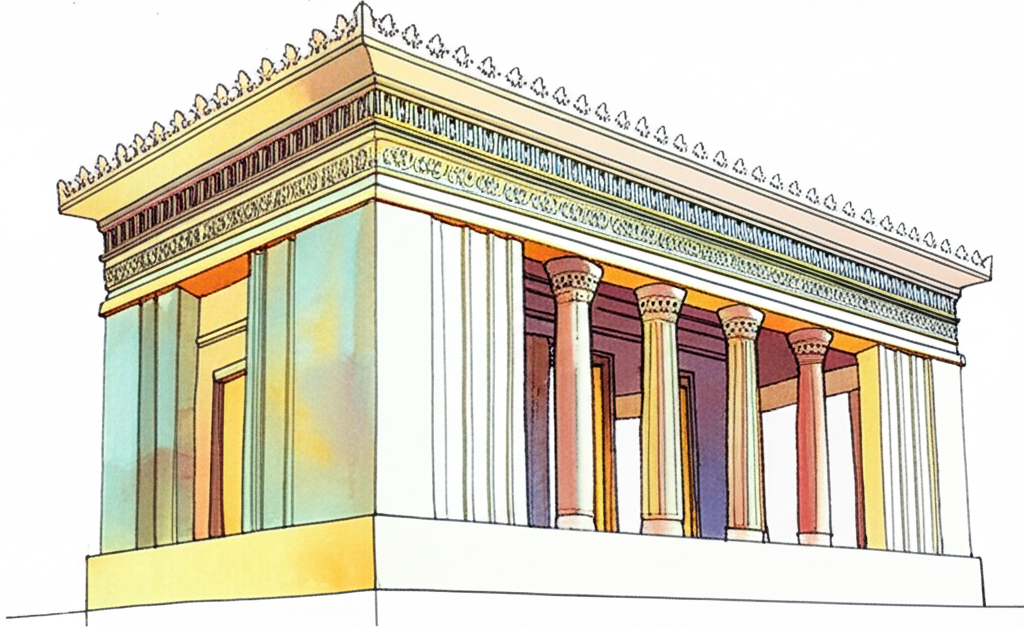
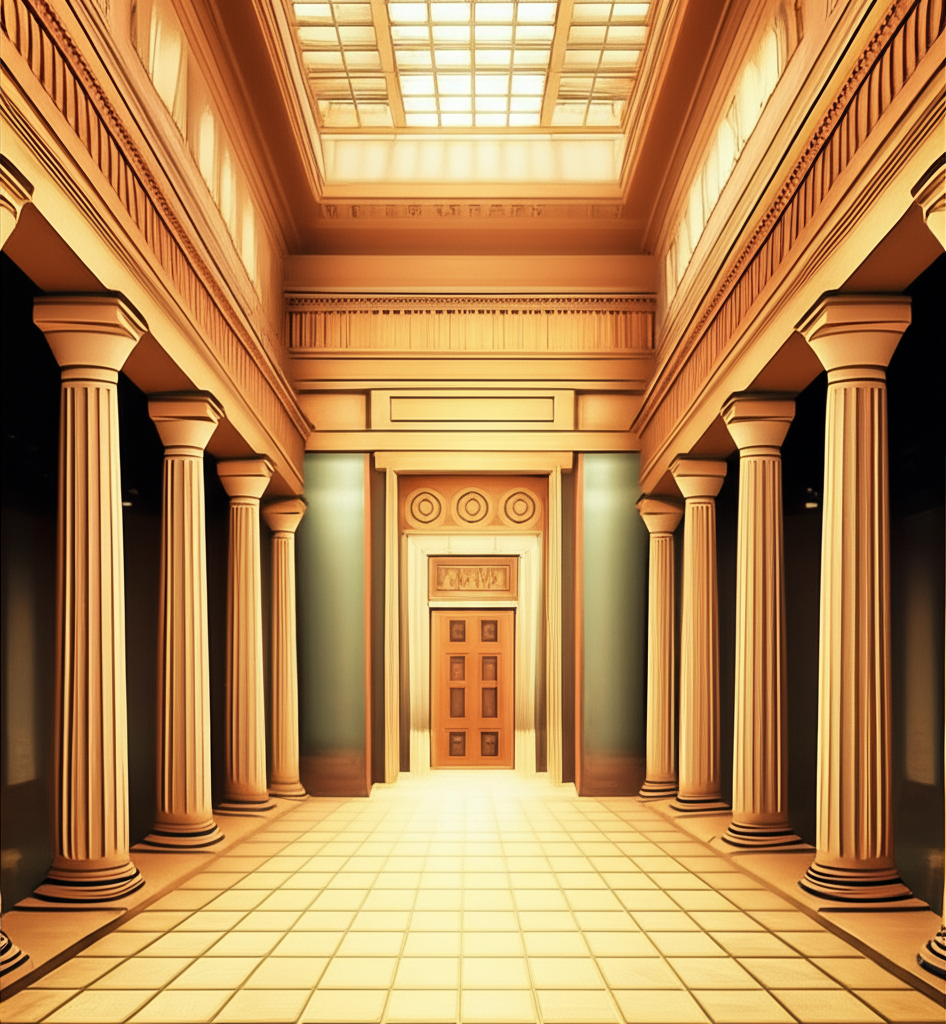
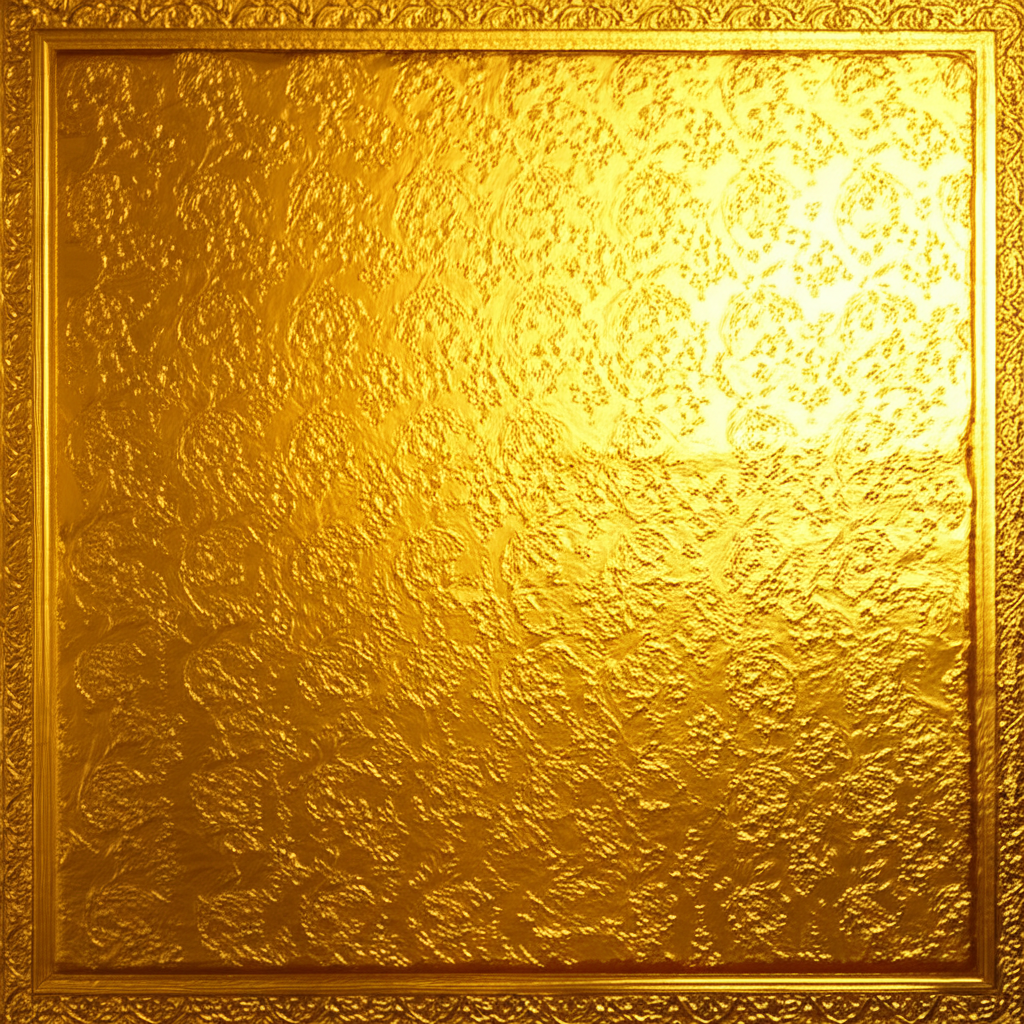
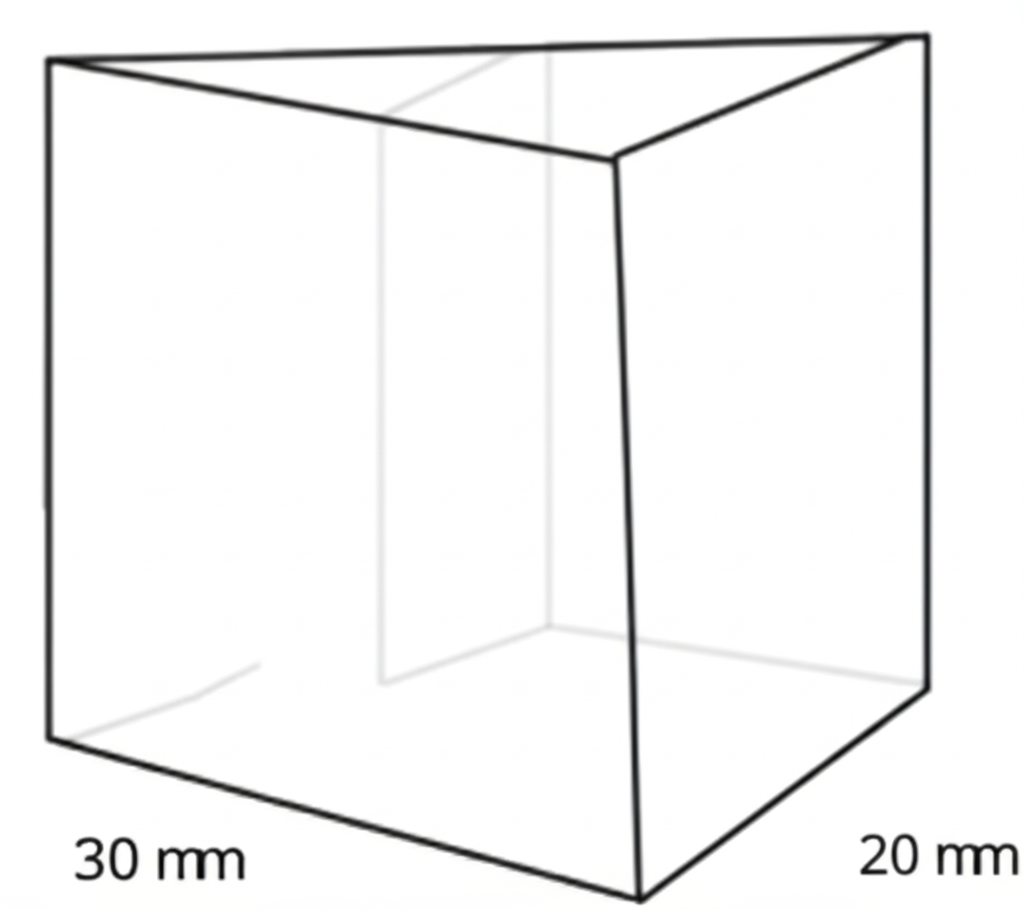

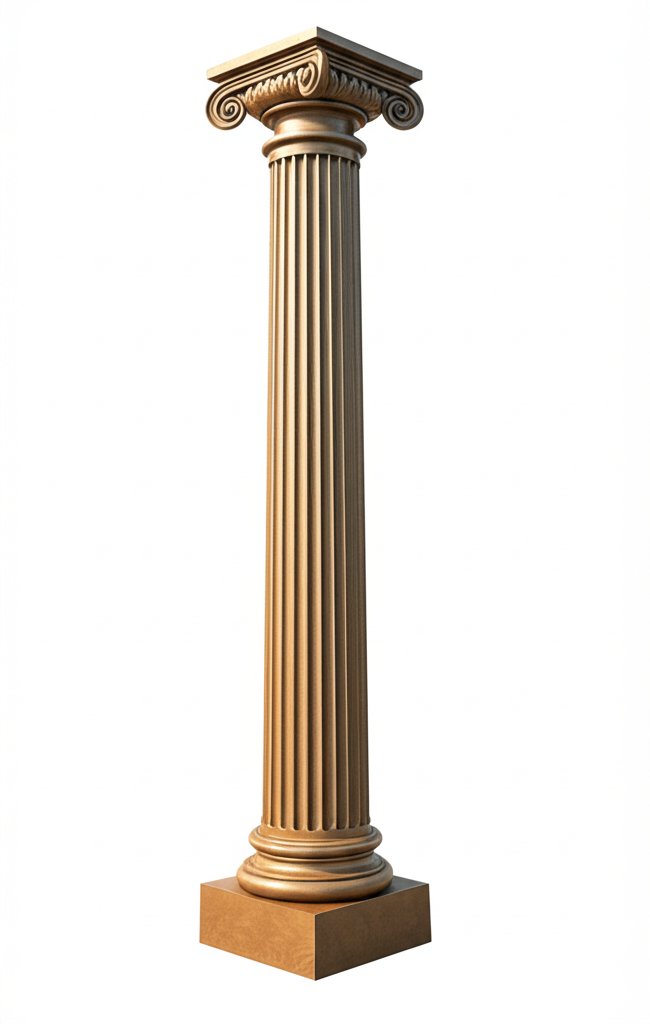
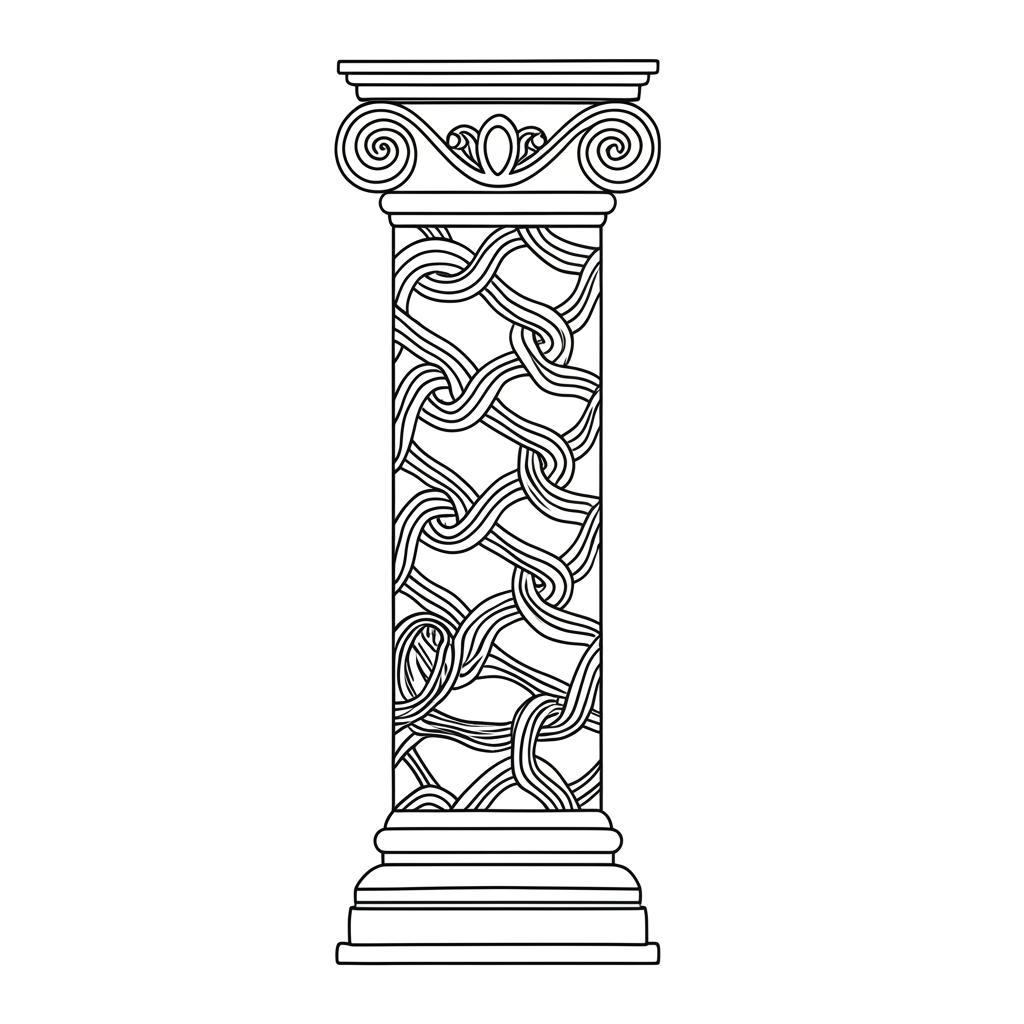

2 Chronicles chapter 3 kjv
- 1 Then Solomon began to build the house of the LORD at Jerusalem in mount Moriah, where the Lord appeared unto David his father, in the place that David had prepared in the threshingfloor of Ornan the Jebusite.
- 2 And he began to build in the second day of the second month, in the fourth year of his reign.
- 3 Now these are the things wherein Solomon was instructed for the building of the house of God. The length by cubits after the first measure was threescore cubits, and the breadth twenty cubits.
- 4 And the porch that was in the front of the house, the length of it was according to the breadth of the house, twenty cubits, and the height was an hundred and twenty: and he overlaid it within with pure gold.
- 5 And the greater house he cieled with fir tree, which he overlaid with fine gold, and set thereon palm trees and chains.
- 6 And he garnished the house with precious stones for beauty: and the gold was gold of Parvaim.
- 7 He overlaid also the house, the beams, the posts, and the walls thereof, and the doors thereof, with gold; and graved cherubim on the walls.
- 8 And he made the most holy house, the length whereof was according to the breadth of the house, twenty cubits, and the breadth thereof twenty cubits: and he overlaid it with fine gold, amounting to six hundred talents.
- 9 And the weight of the nails was fifty shekels of gold. And he overlaid the upper chambers with gold.
- 10 And in the most holy house he made two cherubim of image work, and overlaid them with gold.
- 11 And the wings of the cherubim were twenty cubits long: one wing of the one cherub was five cubits, reaching to the wall of the house: and the other wing was likewise five cubits, reaching to the wing of the other cherub.
- 12 And one wing of the other cherub was five cubits, reaching to the wall of the house: and the other wing was five cubits also, joining to the wing of the other cherub.
- 13 The wings of these cherubim spread themselves forth twenty cubits: and they stood on their feet, and their faces were inward.
- 14 And he made the vail of blue, and purple, and crimson, and fine linen, and wrought cherubim thereon.
- 15 Also he made before the house two pillars of thirty and five cubits high, and the chapiter that was on the top of each of them was five cubits.
- 16 And he made chains, as in the oracle, and put them on the heads of the pillars; and made an hundred pomegranates, and put them on the chains.
- 17 And he reared up the pillars before the temple, one on the right hand, and the other on the left; and called the name of that on the right hand Jachin, and the name of that on the left Boaz.
2 Chronicles chapter 3 nkjv
- 1 Now Solomon began to build the house of the LORD at Jerusalem on Mount Moriah, where the LORD had appeared to his father David, at the place that David had prepared on the threshing floor of Ornan the Jebusite.
- 2 And he began to build on the second day of the second month in the fourth year of his reign.
- 3 This is the foundation which Solomon laid for building the house of God: The length was sixty cubits (by cubits according to the former measure) and the width twenty cubits.
- 4 And the vestibule that was in front of the sanctuary was twenty cubits long across the width of the house, and the height was one hundred and twenty. He overlaid the inside with pure gold.
- 5 The larger room he paneled with cypress which he overlaid with fine gold, and he carved palm trees and chainwork on it.
- 6 And he decorated the house with precious stones for beauty, and the gold was gold from Parvaim.
- 7 He also overlaid the house?the beams and doorposts, its walls and doors?with gold; and he carved cherubim on the walls.
- 8 And he made the Most Holy Place. Its length was according to the width of the house, twenty cubits, and its width twenty cubits. He overlaid it with six hundred talents of fine gold.
- 9 The weight of the nails was fifty shekels of gold; and he overlaid the upper area with gold.
- 10 In the Most Holy Place he made two cherubim, fashioned by carving, and overlaid them with gold.
- 11 The wings of the cherubim were twenty cubits in overall length: one wing of the one cherub was five cubits, touching the wall of the room, and the other wing was five cubits, touching the wing of the other cherub;
- 12 one wing of the other cherub was five cubits, touching the wall of the room, and the other wing also was five cubits, touching the wing of the other cherub.
- 13 The wings of these cherubim spanned twenty cubits overall. They stood on their feet, and they faced inward.
- 14 And he made the veil of blue, purple, crimson, and fine linen, and wove cherubim into it.
- 15 Also he made in front of the temple two pillars thirty-five cubits high, and the capital that was on the top of each of them was five cubits.
- 16 He made wreaths of chainwork, as in the inner sanctuary, and put them on top of the pillars; and he made one hundred pomegranates, and put them on the wreaths of chainwork.
- 17 Then he set up the pillars before the temple, one on the right hand and the other on the left; he called the name of the one on the right hand Jachin, and the name of the one on the left Boaz.
2 Chronicles chapter 3 niv
- 1 Then Solomon began to build the temple of the LORD in Jerusalem on Mount Moriah, where the LORD had appeared to his father David. It was on the threshing floor of Araunah the Jebusite, the place provided by David.
- 2 He began building on the second day of the second month in the fourth year of his reign.
- 3 The foundation Solomon laid for building the temple of God was sixty cubits long and twenty cubits wide (using the cubit of the old standard).
- 4 The portico at the front of the temple was twenty cubits long across the width of the building and twenty cubits high. He overlaid the inside with pure gold.
- 5 He paneled the main hall with juniper and covered it with fine gold and decorated it with palm tree and chain designs.
- 6 He adorned the temple with precious stones. And the gold he used was gold of Parvaim.
- 7 He overlaid the ceiling beams, doorframes, walls and doors of the temple with gold, and he carved cherubim on the walls.
- 8 He built the Most Holy Place, its length corresponding to the width of the temple?twenty cubits long and twenty cubits wide. He overlaid the inside with six hundred talents of fine gold.
- 9 The gold nails weighed fifty shekels. He also overlaid the upper parts with gold.
- 10 For the Most Holy Place he made a pair of sculptured cherubim and overlaid them with gold.
- 11 The total wingspan of the cherubim was twenty cubits. One wing of the first cherub was five cubits long and touched the temple wall, while its other wing, also five cubits long, touched the wing of the other cherub.
- 12 Similarly one wing of the second cherub was five cubits long and touched the other temple wall, and its other wing, also five cubits long, touched the wing of the first cherub.
- 13 The wings of these cherubim extended twenty cubits. They stood on their feet, facing the main hall.
- 14 He made the curtain of blue, purple and crimson yarn and fine linen, with cherubim worked into it.
- 15 For the front of the temple he made two pillars, which together were thirty-five cubits long, each with a capital five cubits high.
- 16 He made interwoven chains and put them on top of the pillars. He also made a hundred pomegranates and attached them to the chains.
- 17 He erected the pillars in the front of the temple, one to the south and one to the north. The one to the south he named Jakin and the one to the north Boaz.
2 Chronicles chapter 3 esv
- 1 Then Solomon began to build the house of the LORD in Jerusalem on Mount Moriah, where the LORD had appeared to David his father, at the place that David had appointed, on the threshing floor of Ornan the Jebusite.
- 2 He began to build in the second month of the fourth year of his reign.
- 3 These are Solomon's measurements for building the house of God: the length, in cubits of the old standard, was sixty cubits, and the breadth twenty cubits.
- 4 The vestibule in front of the nave of the house was twenty cubits long, equal to the width of the house, and its height was 120 cubits. He overlaid it on the inside with pure gold.
- 5 The nave he lined with cypress and covered it with fine gold and made palms and chains on it.
- 6 He adorned the house with settings of precious stones. The gold was gold of Parvaim.
- 7 So he lined the house with gold ? its beams, its thresholds, its walls, and its doors ? and he carved cherubim on the walls.
- 8 And he made the Most Holy Place. Its length, corresponding to the breadth of the house, was twenty cubits, and its breadth was twenty cubits. He overlaid it with 600 talents of fine gold.
- 9 The weight of gold for the nails was fifty shekels. And he overlaid the upper chambers with gold.
- 10 In the Most Holy Place he made two cherubim of wood and overlaid them with gold.
- 11 The wings of the cherubim together extended twenty cubits: one wing of the one, of five cubits, touched the wall of the house, and its other wing, of five cubits, touched the wing of the other cherub;
- 12 and of this cherub, one wing, of five cubits, touched the wall of the house, and the other wing, also of five cubits, was joined to the wing of the first cherub.
- 13 The wings of these cherubim extended twenty cubits. The cherubim stood on their feet, facing the nave.
- 14 And he made the veil of blue and purple and crimson fabrics and fine linen, and he worked cherubim on it.
- 15 In front of the house he made two pillars thirty-five cubits high, with a capital of five cubits on the top of each.
- 16 He made chains like a necklace and put them on the tops of the pillars, and he made a hundred pomegranates and put them on the chains.
- 17 He set up the pillars in front of the temple, one on the south, the other on the north; that on the south he called Jachin, and that on the north Boaz.
2 Chronicles chapter 3 nlt
- 1 So Solomon began to build the Temple of the LORD in Jerusalem on Mount Moriah, where the LORD had appeared to David, his father. The Temple was built on the threshing floor of Araunah the Jebusite, the site that David had selected.
- 2 The construction began in midspring, during the fourth year of Solomon's reign.
- 3 These are the dimensions Solomon used for the foundation of the Temple of God (using the old standard of measurement). It was 90 feet long and 30 feet wide.
- 4 The entry room at the front of the Temple was 30 feet wide, running across the entire width of the Temple, and 30 feet high. He overlaid the inside with pure gold.
- 5 He paneled the main room of the Temple with cypress wood, overlaid it with fine gold, and decorated it with carvings of palm trees and chains.
- 6 He decorated the walls of the Temple with beautiful jewels and with gold from the land of Parvaim.
- 7 He overlaid the beams, thresholds, walls, and doors throughout the Temple with gold, and he carved figures of cherubim on the walls.
- 8 He made the Most Holy Place 30 feet wide, corresponding to the width of the Temple, and 30 feet deep. He overlaid its interior with 23 tons of fine gold.
- 9 The gold nails that were used weighed 20 ounces each. He also overlaid the walls of the upper rooms with gold.
- 10 He made two figures shaped like cherubim, overlaid them with gold, and placed them in the Most Holy Place.
- 11 The total wingspan of the two cherubim standing side by side was 30 feet. One wing of the first figure was 7 1?2 feet long, and it touched the Temple wall. The other wing, also 7 1?2 feet long, touched one of the wings of the second figure.
- 12 In the same way, the second figure had one wing 7 1?2 feet long that touched the opposite wall. The other wing, also 7 1?2 feet long, touched the wing of the first figure.
- 13 So the wingspan of the two cherubim side by side was 30 feet. They stood on their feet and faced out toward the main room of the Temple.
- 14 Across the entrance of the Most Holy Place he hung a curtain made of fine linen, decorated with blue, purple, and scarlet thread and embroidered with figures of cherubim.
- 15 For the front of the Temple, he made two pillars that were 27 feet tall, each topped by a capital extending upward another 7 1?2 feet.
- 16 He made a network of interwoven chains and used them to decorate the tops of the pillars. He also made 100 decorative pomegranates and attached them to the chains.
- 17 Then he set up the two pillars at the entrance of the Temple, one to the south of the entrance and the other to the north. He named the one on the south Jakin, and the one on the north Boaz.
- Bible Book of 2 Chronicles
- 1 Solomon Worships at Gibeon
- 2 Preparing to Build the Temple
- 3 Solomon Builds the Temple
- 4 The Temple's Furnishings
- 5 The Ark Brought to the Temple
- 6 Solomon Blesses the People
- 7 Shekinah glory of God
- 8 Solomon's Accomplishments
- 9 The Queen of Sheba
- 10 The Revolt Against Rehoboam
- 11 Rehoboam Secures His Kingdom
- 12 Egypt Plunders Jerusalem
- 13 Abijah Reigns in Judah
- 14 King Asa of Judah
- 15 Asa's Religious Reforms
- 16 Asa's Last Years
- 17 Jehoshaphat Reigns in Judah
- 18 Jehoshaphat Allies with Ahab
- 19 Jehoshaphat's Reforms
- 20 King Jehoshaphat's Prayer
- 21 Jehoram Reigns in Judah
- 22 Ahaziah Reigns in Judah
- 23 Joash Made King
- 24 King Joash Repairs the Temple
- 25 Amaziah Reigns in Judah
- 26 King Uzziah Reigns in Judah
- 27 Jotham Reigns in Judah
- 28 Ahaz Reigns in Judah
- 29 Hezekiah Reigns in Judah
- 30 Passover Celebrated
- 31 Hezekiah Organizes the Priests
- 32 Sennacherib Boasts Against the Lord
- 33 Manasseh Reigns in Judah
- 34 Josiah Reigns in Judah
- 35 Josiah Keeps the Passover
- 36 Judah's Decline